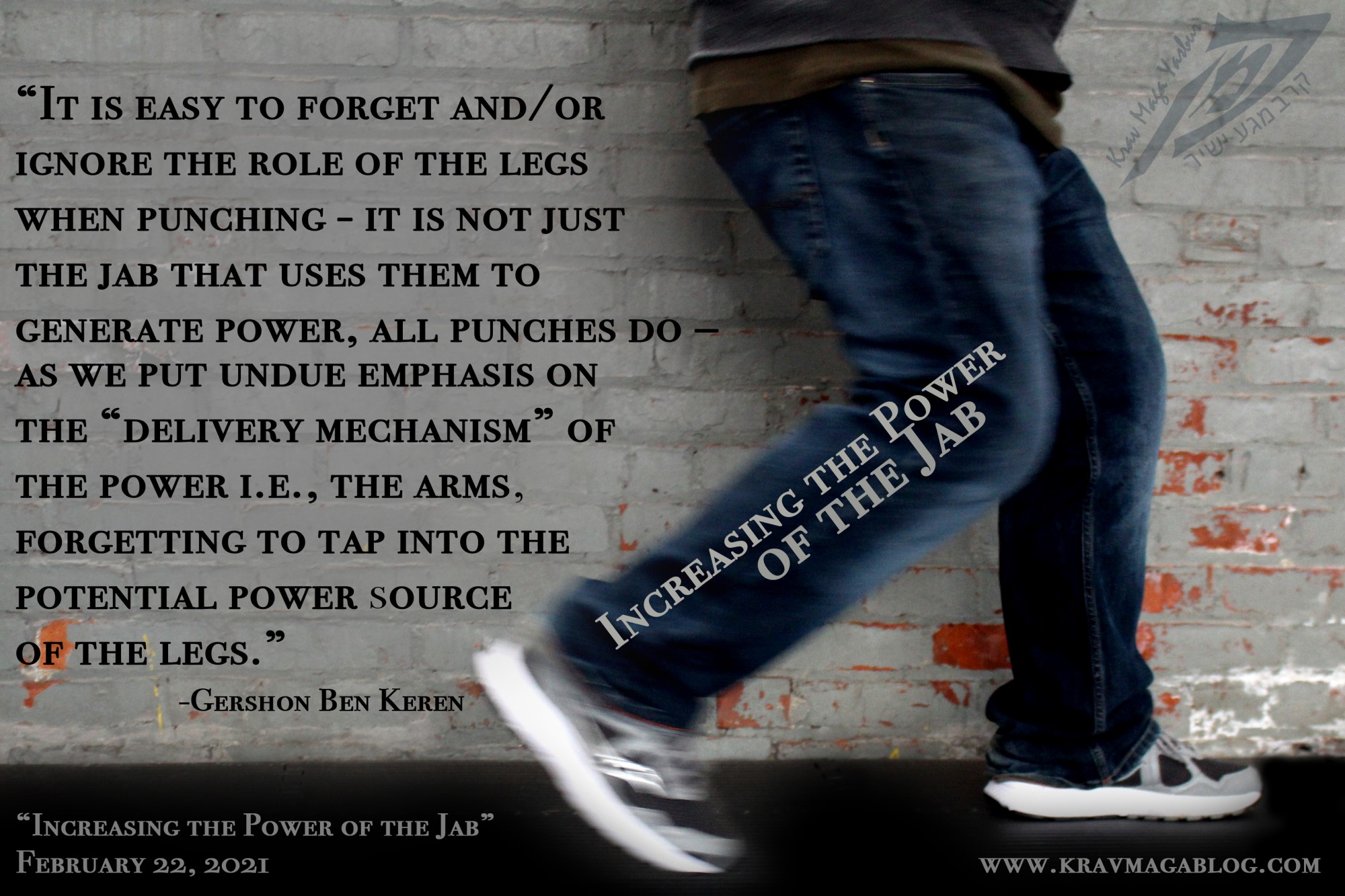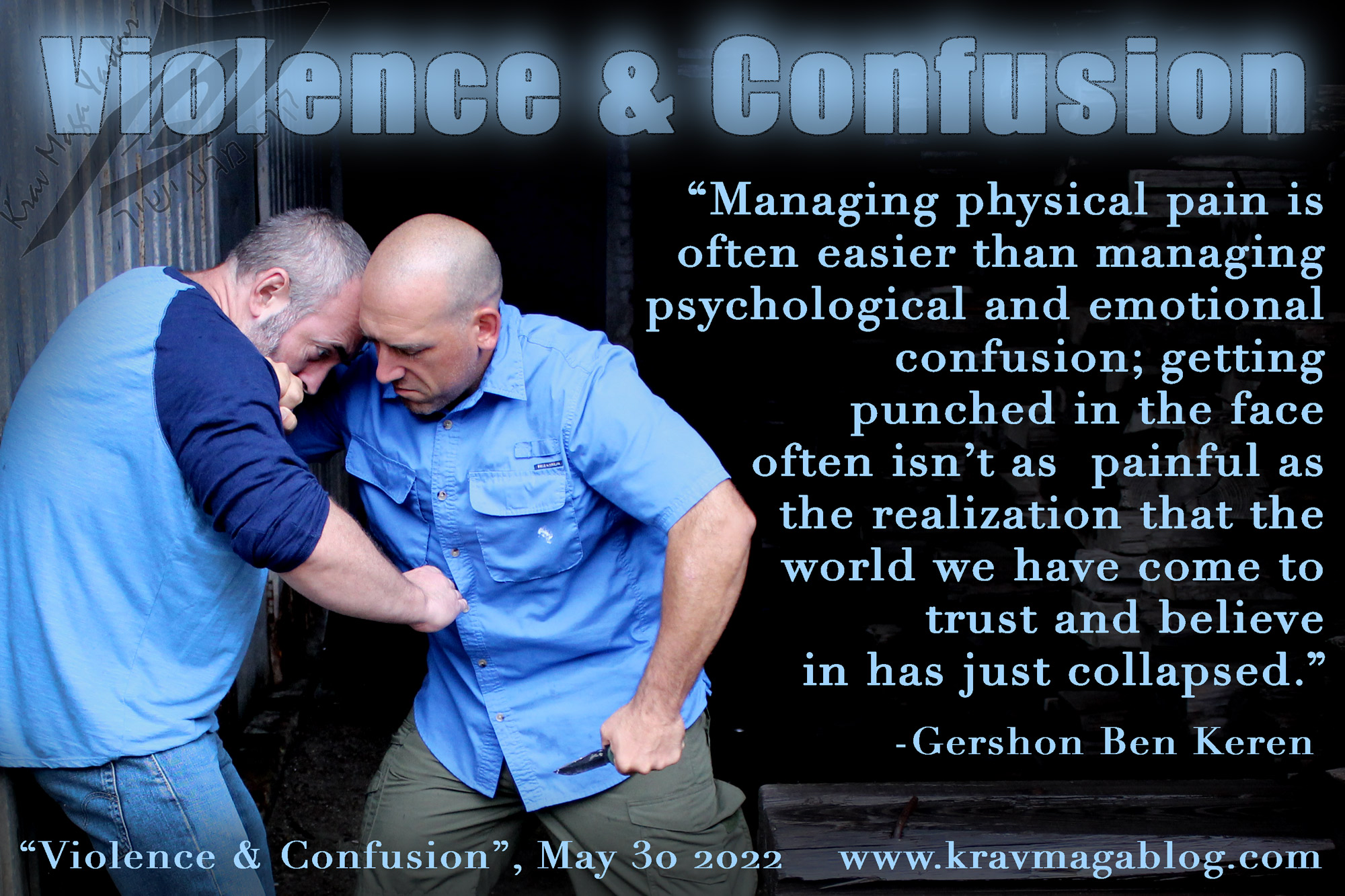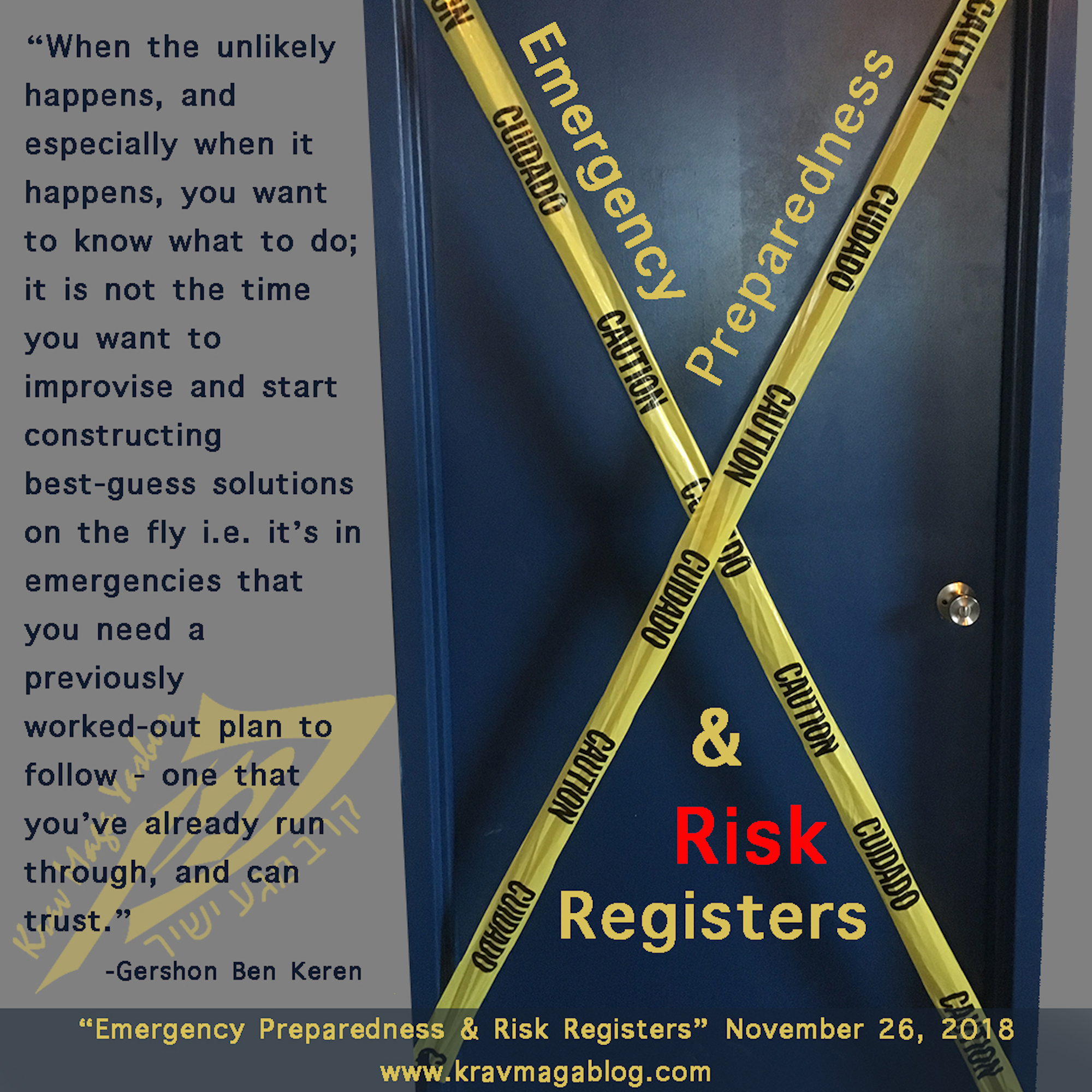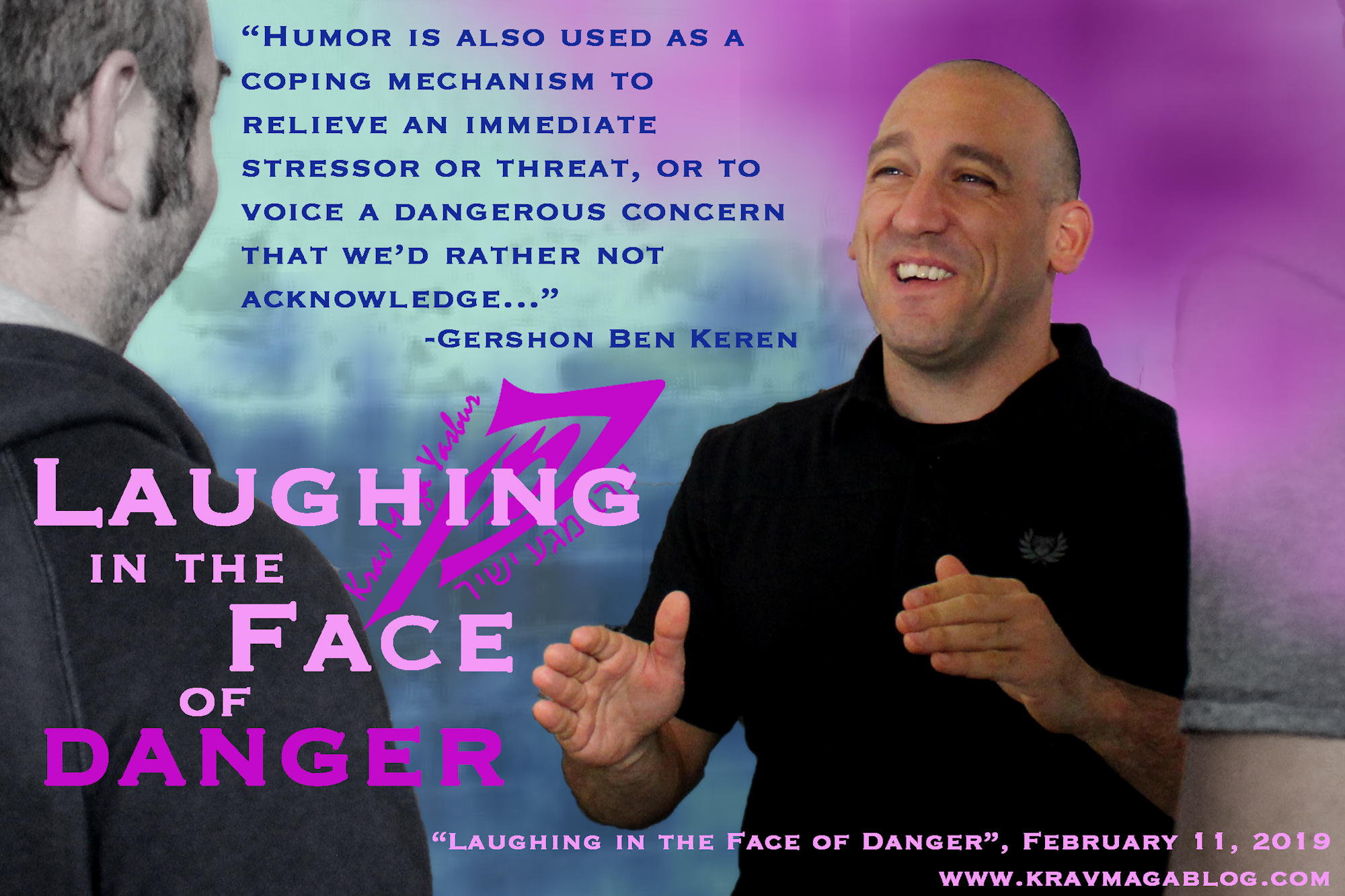How Tidying Up Can Save Your Life, is an article written by Gershon Ben Keren, a 5th Degree Black Belt in Krav Maga, who teaches Krav Maga in Boston, MA. He has also authored three Amazon best-Selling Books on Krav Maga.
Holding on to objects, and to a certain extent hoarding, is inherent in the human condition. To a certain degree and extent, it’s etched into our DNA – as part of our survival instinct(s). We became the apex creature on this planet due to our ability to fashion tools, and these tools ensured our survival. When we first came down from the trees, and onto the plains, losing a flint for making fire, or a bowl to cook in, could have been disastrous for us, and so we started to place a value on items, that was different from other animals e.g. a chimp may be protective of something they have constructed due to pride in their accomplishment, but no species relies on its creations like humans do. So strong is our desire to hold on to the things that we own, that we must be directly instructed to not waste time looking for and collecting our possessions in the event of a fire. A few days ago, in Los Angeles, a woman was dragged under a vehicle and killed, when she wouldn’t give up her bag to purse thieves. We have an instinct to hold on to our possessions, even when they are no longer important for our survival, and this is more than just a matter of pride and ego; it runs deep. It’s one of the reasons that when training mugging scenarios, I have people practice handing over their money/wallet – if you’ve already gone through the motions, you are more likely to do it. It’s an action, that we must practice, to get over our reluctance in doing it. It’s one thing to know that handing over your wallet, letting go of your purse, is the right thing to do from a survival perspective, it’s another thing to get over the emotional inertia that prevents us from doing so.
Several years ago, two aggressors attempted to grab my laptop bag from me, and it resulted in a physical altercation – I didn’t follow my own advice to acquiesce. Fortunately, neither aggressor was particularly motivated to follow through with the bag snatch, and I came out of it pretty much unscathed. However, it was the wrong thing to do on my part. If this had been London, rather than Boston, I might have had acid thrown in my face as I resisted, and if either one of them had used a weapon, it could have ended very, very differently. When I examined afterwards why I’d done the wrong thing in fighting for some possessions, I concluded that it was probably for two reasons. One, was that I’d just bought a new laptop that was better able to handle the data processing I do in terms of analyzing crime data, etc., and the second was that on the local, hard-drive was 95% of the finished work, that was my second book. These two things, in that moment, represented – but were in no way equivalent to - the flints, cooking pots, etc., of our ancestors. In response to this, when it came time to replace the laptop, I replaced it with a cheaper, refurbished one, and started storing all my work in the cloud, rather than locally. This changed my “relationship” with my laptop, and it became a tool to access data, rather than a repository to store data i.e. it lost its intrinsic worth to me – I could use any device to access what I really was interested in protecting.
I once did some security training with a company that sent their employees abroad to collect data on several different foreign variables, using a formatted notebook. As I talked with them about how it was better to hand over possessions than try to fight for them, they started to tell me how important the information contained in the pages was, and how a whole trip/journey, consisting of several weeks of work, could be lost if they handed over these books i.e. they had a strong reluctance to hand over a bag that contained such work book, regardless of the odds that may have been stacked against them. A solution that we agreed might help them give up their resources was if each night after collecting their data/information, they took photographs of the pages and uploaded them to the cloud, so if they ever were in a situation where they had to hand over their possessions, they would only lose that day’s work.
Risk occurs where assets, threats, and vulnerabilities intersect e.g. if we eliminate all vulnerabilities, or all threats, there is no risk – an impossible task, however if we can reduce vulnerabilities, we can also reduce risk. Another way is be reducing or eliminating assets; if I don’t have a car, I can’t have my car stolen. One of the things I first ask people to do when making risk assessments is to produce an asset inventory: what is it that they’re interested in protecting. I’m interested in what has value to them, what has value to others, and how easily – and at what cost - could items/assets be replaced e.g. could the irreplaceable wedding album be digitized, and/or should it be stored in a fireproof safe? Might this also reduce the risk of running back into a burning building to save and salvage it, etc? Spring cleaning is an excellent time to make an appraisal of your assets, determining emotionally and practically, how you might be able to give something up, or alter its form so it’s not available to be exploited by a threat. If you suddenly find that $20 000, you stashed away in a shoe box at the back of your wardrobe, then it may be worth putting it in the bank, where it becomes a file of (insured) ones and zeroes on the bank’s servers, rather than a physical asset, that you now have to consider how to protect. The number one item stolen from students at university are textbooks; some that may be required reading for a course can run to several hundred dollars. Some students either can’t afford to, or are reluctant to spend this type of money and so steal books from fellow students – most of these books are now digitized, and available as EBooks. No longer a physical asset, they don’t require physical protection.
The other benefit of asset inventories, and spring cleaning, is that you now know exactly what you do have, and where. You don’t have to worry about giving something up, due to not knowing what you might be giving up. If you have collected items, things in a bag or purse over a number of years, and have forgotten exactly what is in your bag, you may be reluctant to give it up, because you may be giving up something of value to you e.g. you can’t remember if it still contains a family heirloom, such as an antique watch that you kept meaning to take for repair, etc. If such an item is something you would have a reluctance to hand over, then it perhaps isn’t something that you should be carrying in this fashion. The same is true of cash; don’t carry amounts that you’re not prepared to hand over. If that’s not an option, spread it about your person rather than keeping it all in the one place, such as your bag/wallet. If somebody steals or robs me of my laptop case, I know I can cheaply replace the computer, and I’ll still have access to my data. I know everything else that is in that bag, and have an inventory so I know exactly what I need to replace – I also systematically clean it out, because there is always the possibility that things which don’t need to be carried around with me every day, creep in.
A friend of mine recently had all his possessions destroyed due to water damage in his apartment. In talking to him, I found he’d down-sized and digitized everything. If it, or a similar disaster, happened again, he would lose little, and he’d know what he’d have to replace. There is nothing wrong with owning forty pairs of shoes, twelve suits, and having multiple watches, etc. However, if you never wear or use any of these items, they represent under-utilized assets that need to be protected, and rather than having all of the watches stored in the same drawer, it would make more sense to either get rid of them or keep them somewhere else, where they are less vulnerable to burglary, etc. Spring cleaning gives us a good opportunity to start making such decisions, and put an element of planning and preparation around the storage of our valued possessions, so that those things we hold dear don’t come to put us at risk.
0 COMMENTS
















